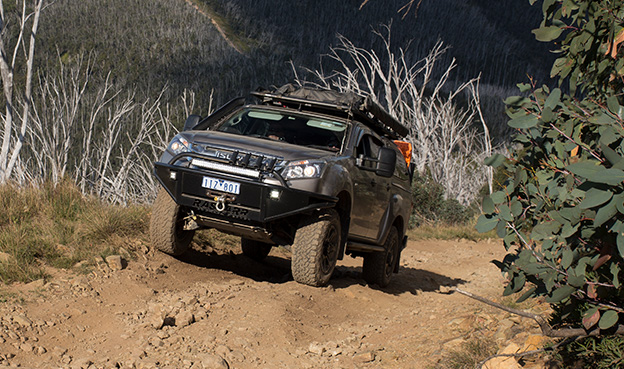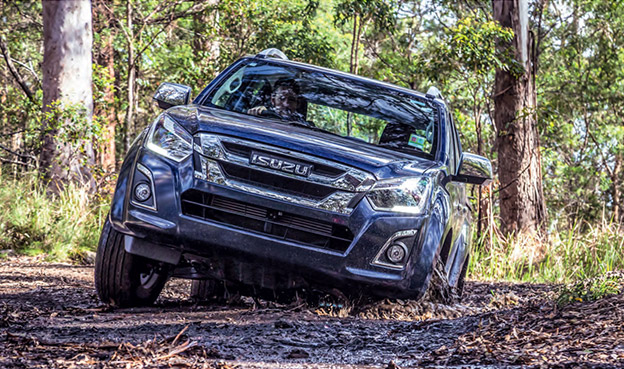

Fans rejoice, the tried and tested Isuzu 3-litre turbo-diesel lives on and it’s been completely overhauled to be the most advanced engine ever to power a D-MAX and MU-X.
Isuzu have been at the forefront of manufacturing for decades. Australia had its first taste of the marque’s engineering mastery with the 1st generation D-MAX in 2008. Twelve years later, that legendary 3-litre turbo-diesel 4JJ1-TC engine is still revered as the benchmark of frugality and durability. 2020 marked the introduction of the highly anticipated 3rd generation D-MAX, followed by the 2nd generation MU-X—both powered by the Australian exclusive, Euro 5 compliant, 4JJ3-TCX turbo-diesel engine.
Tasked to refine the beloved 3-litre turbo-diesel further, Isuzu engineers have finessed new levels of power and torque from the famed engine, all while retaining Isuzu’s trademark reliability and real world fuel efficiency. The 4JJ3-TCX is a derivative of the 4JJ1-TC, evolving from that proven platform to now produce 140kW at 3,600rpm and 450Nm at 1,600rpm through to 2,600rpm. That’s a 10kW and 20Nm increase over the preceding engine outputs respectively. The strength of the engine comes courtesy of the wider and stronger torque band, with the 450Nm peak torque figure now available across a flat 1,000rpm stretch. That’s more than five times the rev-band of its predecessor.
More importantly, midrange torque has also been improved, with a hearty 400Nm on tap from 1,400rpm through to 3,250rpm. The result is a dramatic boost in both drivability and performance, particularly when towing, loaded up or off-road. Impressively, 300Nm is now produced from just 1,000rpm—testament to how efficient the 4JJ3-TCX’s almost nonchalant ability to get the job done.


Image 1: D-MAX Engine Bay
Image 2: MU-X Engine Bay
Not only have Isuzu Engineers pumped the engine’s numbers, they’ve made it more thermally efficient. By reducing internal friction and exhaust emissions, the 4JJ3-TCX emits just 200-207g/km of CO2, during combined cycle testing—taking a welcomed step in saving the environment. Depending on the D-MAX model, fuel consumption figures return 7.7-8.0-litres/100km, during combined cycle testing. And depending on the MU-X model, figures can return 7.8-8.3-litres/100km—with the best of the range capable of travelling 1000km on a single tank of diesel.
Lifting the bonnet reveals the heavily optimised air intake, featuring a labyrinth of sealed airways fed from the iconic Isuzu front grille, increasing the water wading depth to up to 800mm. Next to that is an electronically controlled Variable Geometry System (VGS) Turbocharger, which has been heavily revised to improve efficiency, response, and longevity, all while reducing turbo lag. Hanging from the back of the VGS Turbocharger is the tried and proven Diesel Particulate Diffuser (DPD), which has been further revised to increase efficiency and reduce exhaust emissions.
Fuel delivery is important in a turbo-diesel—and in the new-generation D-MAX and MU-X, it’s precisely controlled by the latest high-pressure direct-injection system. Fuel pump hardware pressurises the diesel to over 250MPa before it is atomized by high-efficiency injectors and sprayed directly into the combustion chamber of each cylinder. Engineered by DENSO for high performance applications, this direct fuel injection system uses less moving internal parts for greater durability and optimised for efficiency, with the fuel pump requiring 20% less energy to pressurise the fuel to 25% more pressure than the preceding system. The outcome is a more precise—and more powerful—fuel burn, delivering greater performance with fewer exhaust emissions.

A set of aluminium pistons now incorporate a more efficient combustion chamber design and are coated with a layer of anti-friction diamond-like carbon heat insulation across the piston crown, skirts, and gudgeon pin—which reduces friction and excessive heat generated against the cylinder bore. Adding an extra layer of durability and longevity to the engine block, each cylinder bore is strengthened with Isuzu’s induction-hardened melt-in liner—which significantly improves strength and thermal efficiency, without the need of an additional heavy steel bore liner. Proving that just when it seems Isuzu’s engineers have done all they can to minimise friction and reduce wear, they’ll find more—and boost efficiency, durability and thermal heat management at the same time. The net result is the most thermally efficient engine seen in a D-MAX and MU-X.
Keeping the pistons in time with the valvetrain is a robust stainless-steel timing chain, which is now directed by a quieter, more efficient, double scissor idle gear. This innovative design not only improves durability, it dramatically diminishes engine rattle. The 4JJ3-TCX offers considerably more grunt—and does so considerably more quietly—than the former model. It’s an engineering improvement worth shouting about.






